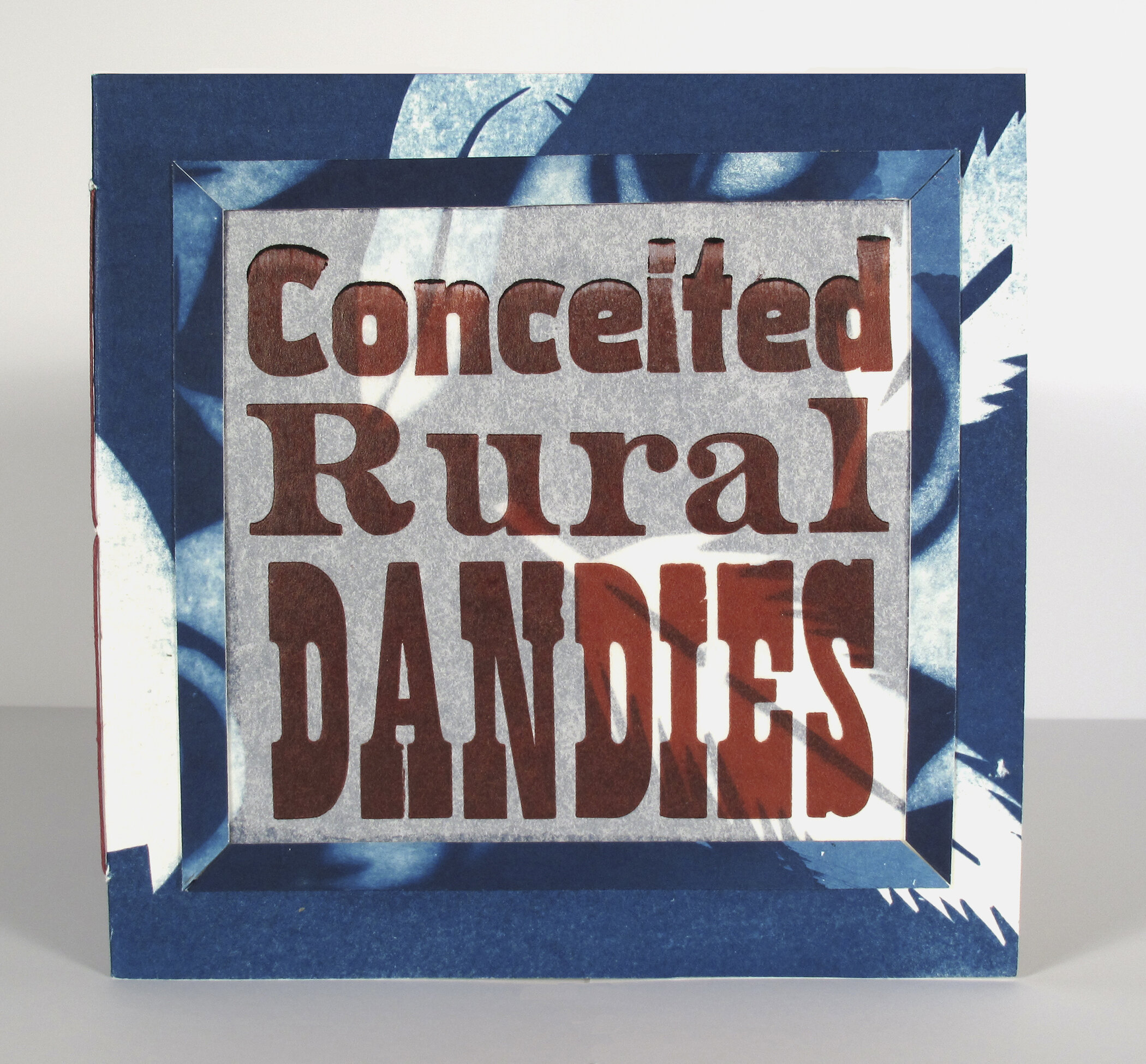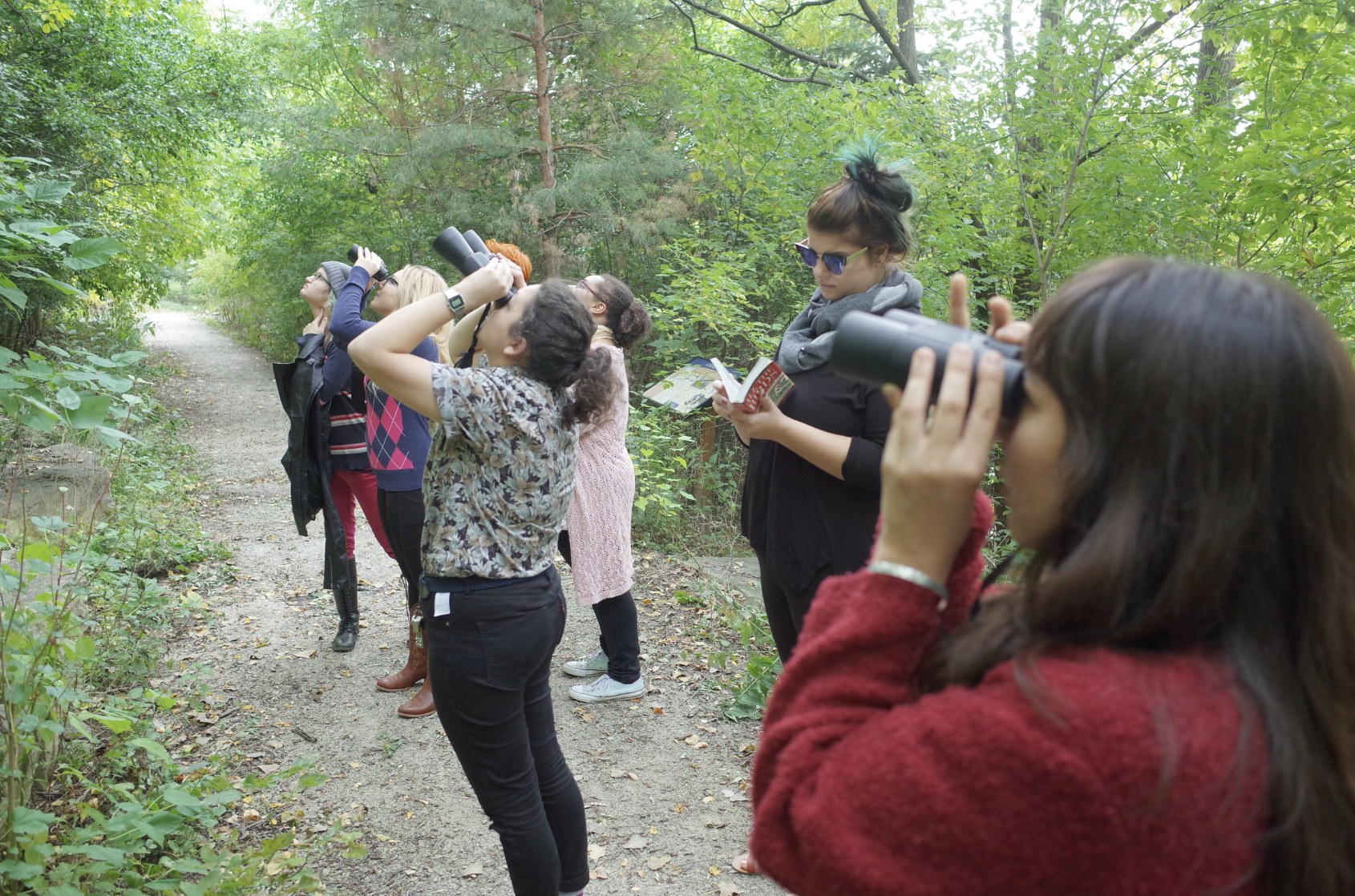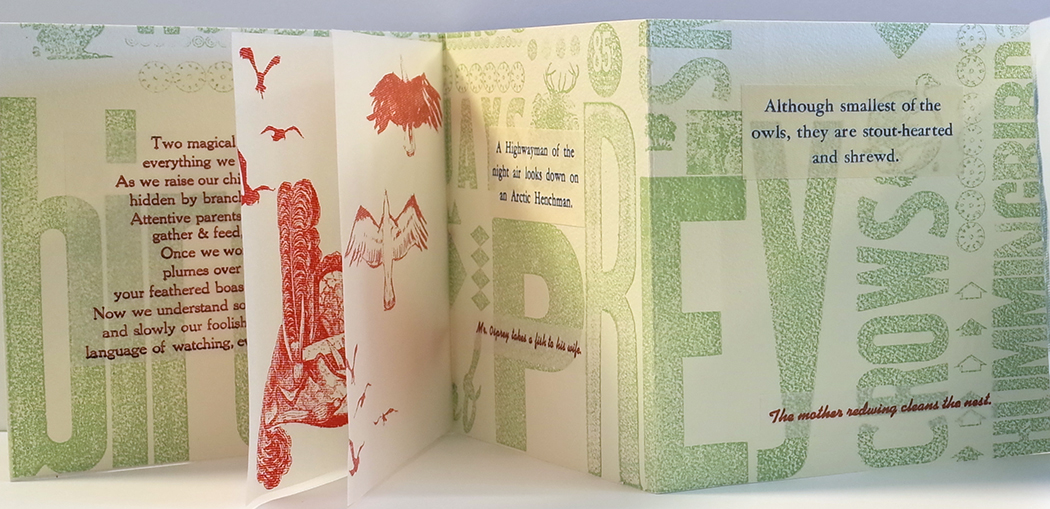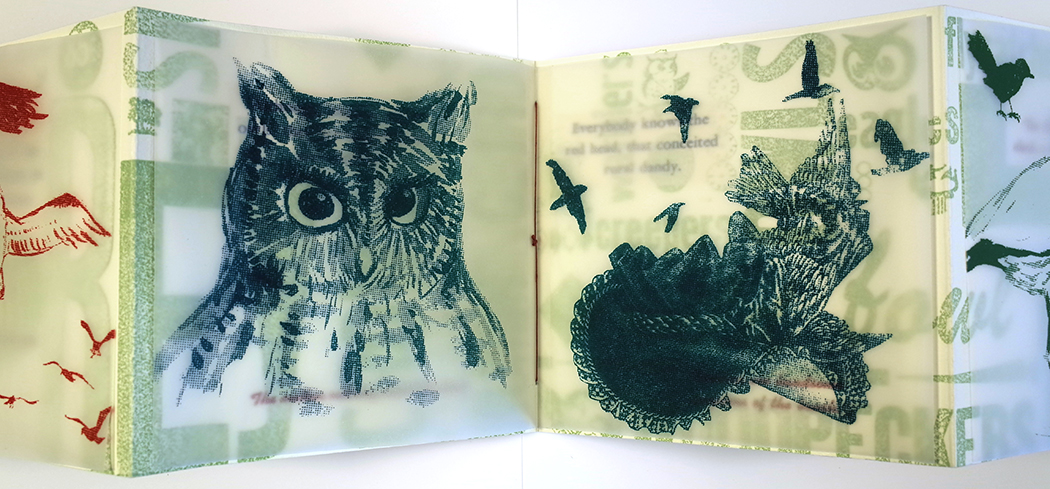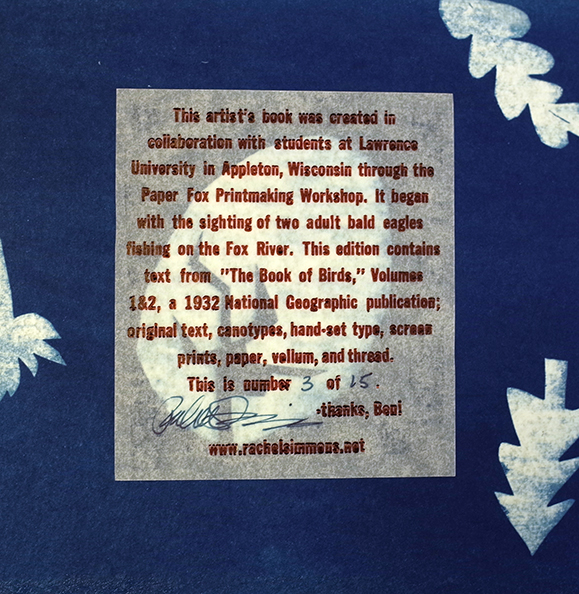"Everybody knows the red head, that conceited rural dandy"...is a caption describing a woodpecker's flashy plumage, part of which became the title of my most recent artist's book, Conceited Rural Dandies. The phrase, and many others found in the book, originated from The Book of Birds, Volumes 1 & 2," a 1932 National Geographic publication in which birds are described in human terms. It was selected for inclusion in the project by a group of about 12 student collaborators from Lawrence University in Appleton, WI, during the time we spent together through Benjamin Rinehart's Paper Fox Printmaking Workshop in October 2016.
In this artist’s book, text and image was paired and layered to help the viewer explore some of the artifacts from the cultural history of birdwatching. Through a vellum layer of recreated field guide drawings and early 20th advertisements for feather-filled ladies' hats, the viewer can see letterpress-printed text, originally composed to describe birds as virtuous, vain, responsible and even caring. The original poem on the first page draws the connection between ladies' hats and birds by imagining why these stylish dressers would eventually trade fashionable feathered hats for binoculars. It sets the stage for the borrowed captions which often refer to birds as humans, discussing their devoted parenting skills, their propensity towards narcissism or rudeness, and even stereotypical ideas of masculinity & femininity. The unique cyanotype covers in this edition of 15 were also a collaborative venture; the Lawrence students created cut-out shapes echoing birds and bird habitats, and the cyanotypes were a result of collaging these shapes together and then exposing the paper to light.
As with many of the socially engaged projects from The Language of Watching, Conceited Rural Dandies began with birdwatching along the Fox River in Appleton, Wisconsin, an activity which brought birds and birdwatching to the attention of the project participants. In a larger sense, it was an excuse to go outside and think about our connections to the natural world for a while. As a symbol of nature, and as some of the most ubiquitous creatures on earth, birds are very accessible to humans. Their sometimes eerily familiar behaviors are very relatable, which makes it easy to connect with them. Since birdwatching began as a conservationist movement and hobby in the early 20th century, those who observe birds have anthropomorphized their behaviors in endlessly creative ways. In Conceited Rural Dandies, the captions we included almost read like poetry as they elegantly and humorously communicate a sincere desire to connect with birds by seeing them as an extension of ourselves.
Though birdwatching—if one browses contemporary field guides—seems to have evolved into more of a competitive sport than these early soft-hearted musings about birds, today's birders still connect with birds in very personal ways. Why do birds still capture our admiration? Maybe we are the "conceited dandies" who judge bird behaviors as good or bad, helpful or villainous; we feel compelled by our own vanity to assess their survivalist behaviors by our social standards. Or maybe we just admire the freedom they have to fly away from the earth to which we are naturally tethered. Either way, as part of The Language of Watching, this work encourage participants to see birds as an integral part of nature, and for a few moments out of our busy lives, re-examine our symbiotic relationship with nature.
To purchase a book from this edition of 15, please inquire at rsimmons@rollins.edu.

